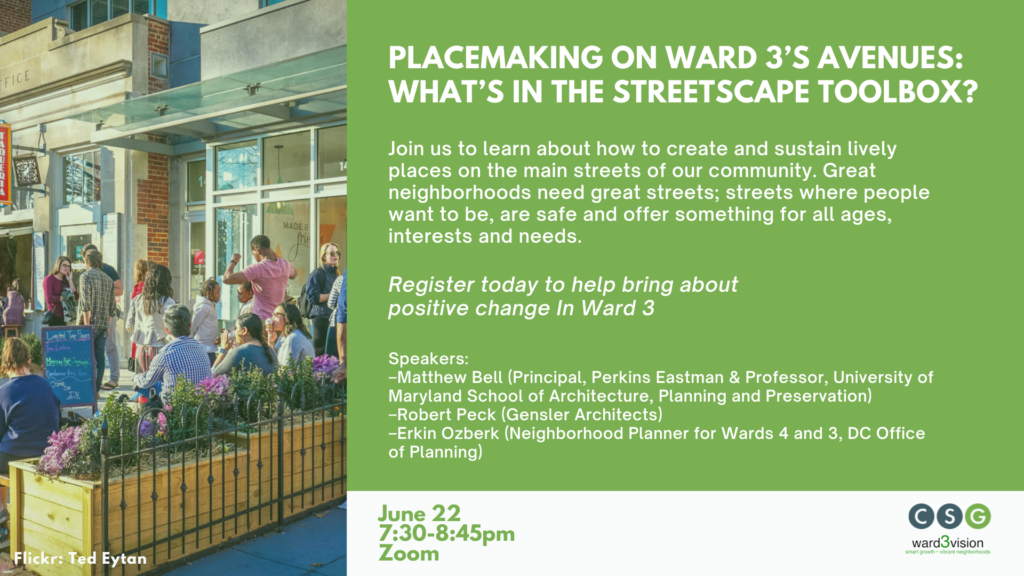September 9, 2021
Fairfax County Board of Supervisors
CONVEYED VIA EMAIL
Dear Members of the Board of Supervisors:
The Sierra Club Great Falls Group and Coalition for Smarter Growth are submitting these comments concerning Fairfax County’s candidate projects for the Northern Virginia Transportation Authority 6-year plan update. We appreciate Fairfax County’s increasing focus on concentrating new development in walkable, bike-able communities near transit. For these smart growth plans to succeed, the County must prioritize transit, pedestrian and bicycle improvements in its applications for transportation funds.
In Fairfax’s current 6-year Transportation Priorities Plan, more than 59% of the anticipated available funds ($1.8 billion) are for road widenings, interchanges, extensions and spot improvements. Only 27.6% ($837.2 million) is programmed for transit capital and operations, and 7.2% ($219.5 million) for bicycle and pedestrian improvements. (Source: Transportation Status Report, Feb. 2021, p. 13) Most of the bicycle and pedestrian improvements are being funded by local sources such as the Commercial and Industrial Tax and a transportation bond. While the county may be able to design and implement individual projects more quickly through using local funding sources, local funds alone are not enough to shift the county toward a cleaner and healthier transportation future within the next 10 years. Fairfax County has a long list of missing pedestrian and bike connections and should seek to fill these gaps in our active transportation network through all available funding sources.
The Northern Virginia Transportation Authority allocates $200 million a year in regional transportation funds, as well as more than $80 million in 30% local-share funds. Fairfax County was awarded more than $700 million in NVTA regional funds for the 2018-23 six-year plan and 2020-25 update, in addition to receiving more than $30 million annually in local-share funds. However, most of Fairfax County’s NVTA projects have been narrowly focused on expanding road capacity for private vehicles. Among Fairfax County’s eight submissions for the NVTA
2020-25 update, for example, seven were road projects, with only one transit project (Route 1 Bus Rapid Transit).
Fairfax County has many bicycle, pedestrian and transit projects that are in the current NVTA Transaction Plan, that need additional funding, and that could be implemented by the 2027 “out” year for the Six-Year Plan update. Moreover, each of these is a regional transportation solution, including Metrorail station access improvements. Fairfax County should make a priority of completing the plans and seeking construction funding to complete these projects within the next six years. These projects include:
- Herndon Metrorail Station Area access improvements: The Herndon Metrorail Station Access Management Study has identified numerous infrastructure improvements so that people can more easily walk, bicycle, and roll to the future Herndon Metrorail station. These include a pedestrian bridge over the Dulles Toll Road to Monroe Street; trail improvements and new trail links; and design improvements to make Herndon Parkway more pedestrian- and bike-friendly. These improvements should be funded and implemented as soon as possible to maximize the benefits of Metro and transit-oriented development.
- High-capacity transit on Annandale and Gallows Road from Annandale to Tysons: Compact, walkable, mixed-use development is emerging all along Gallows Road, especially at INOVA, Mosaic, Dunn Loring and Tysons. The county should accelerate plans to improve transit through priority bus lanes, improved bus stations and other enhancements that will make this area even more walkable and reduce congestion and pollution.
- Route 7 enhanced bus service from Baileys Crossroads to Tysons: Route 7 is the second-busiest bus corridor in northern Virginia. While the overall Route 7 Bus Rapid Transit project from Alexandria to Tysons is still being developed, the county should take steps now to better connect residents in Baileys Crossroads, Seven Corners and other areas to Tysons and other commercial centers in the corridor through enhanced bus service. Bus enhancements could include signal priority and enclosed stations with real-time schedule information, and ultimately transition to full Bus Rapid Transit on dedicated lanes with pre-boarding fare collection.
- Fairfax County express bus service, Herndon Metrorail station to Fort Belvoir: Fairfax County has developed plans for improving transportation on Fairfax County Parkway. These include bus service improvements such as queue jumps and the planned Route 496 bus from Herndon to Franconia Springfield. Fairfax County should expedite key transit improvements and seek regional funding to implement them in the near term. At the same time, any new travel lanes on the Fairfax County Parkway should be dedicated bus and HOV3 lanes.
- South County feeder bus service: Improve service levels on bus routes serving Richmond Highway, Kingstowne, and Springfield.
Thank you for considering our comments.
Sincerely yours,
Susan Bonney, Chair Stewart Schwartz, Executive Director
Sierra Club Great Falls Group Coalition for Smarter Growth
Cc: Tom Biesiadny


